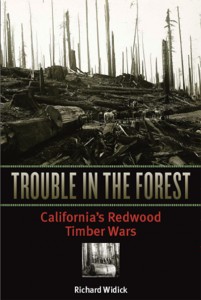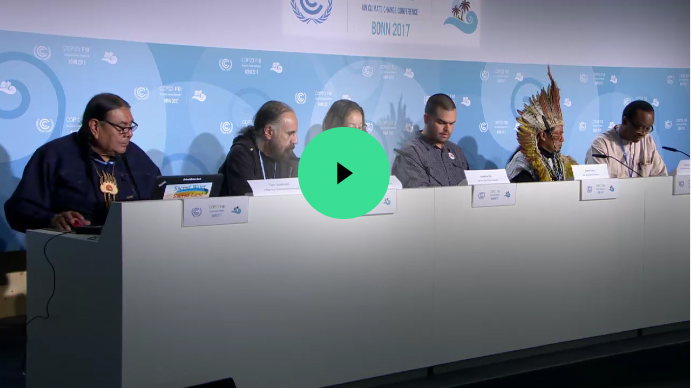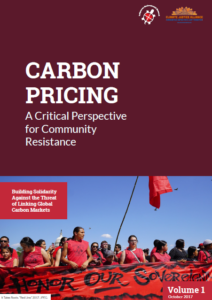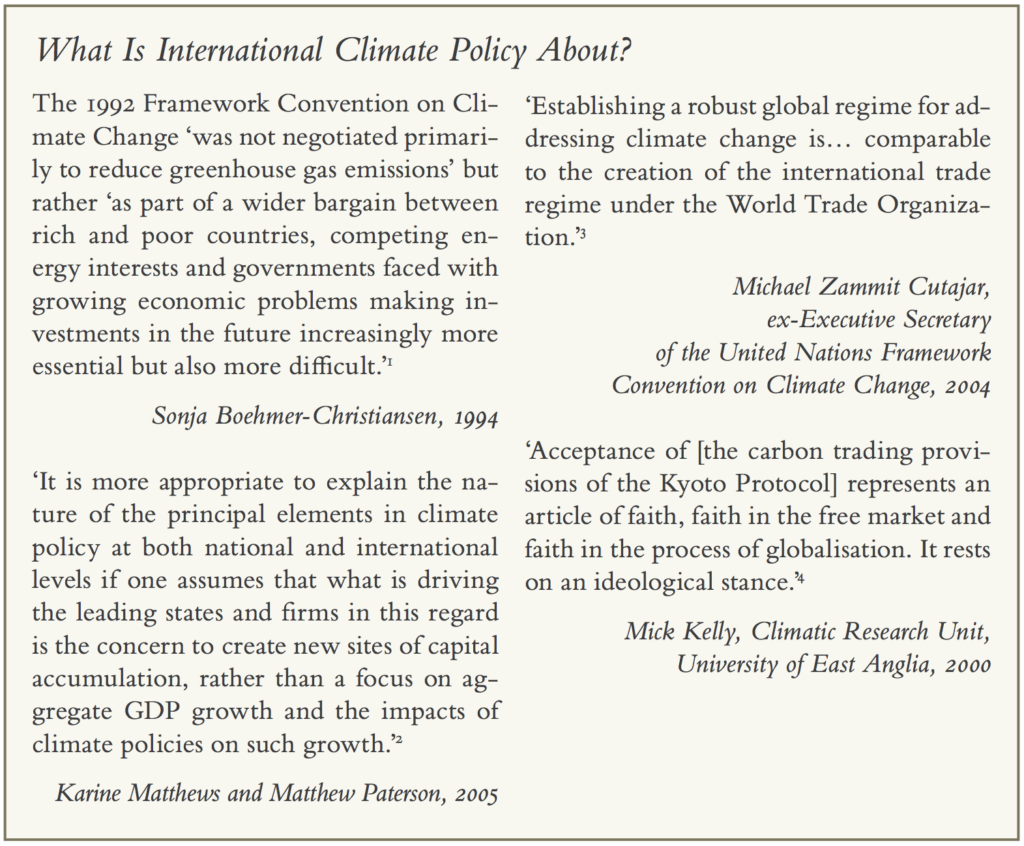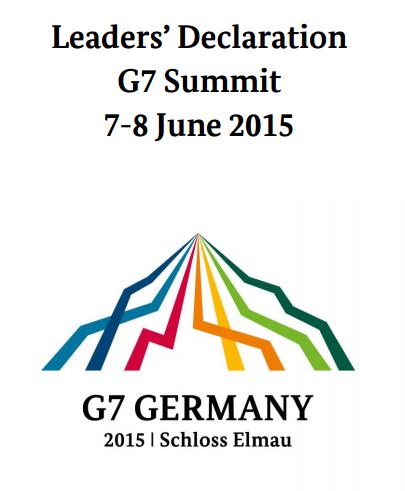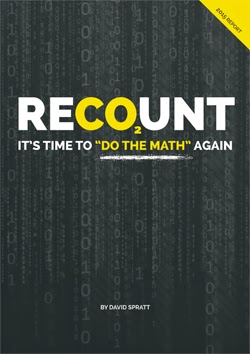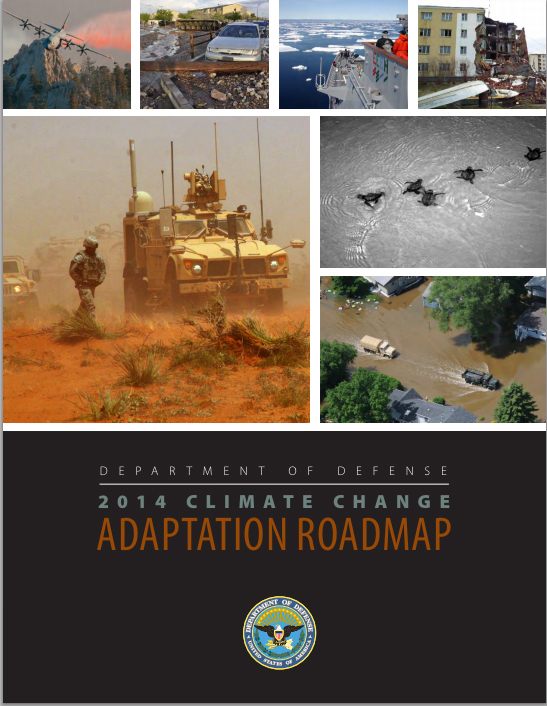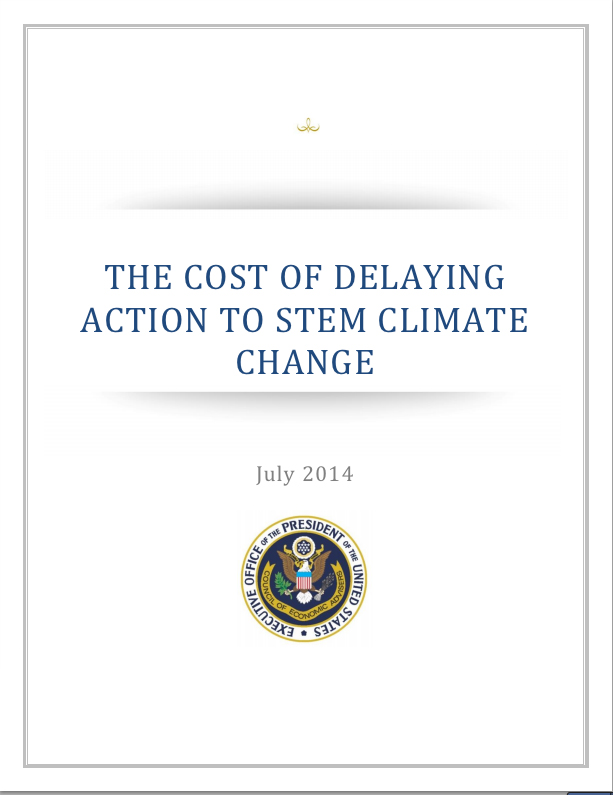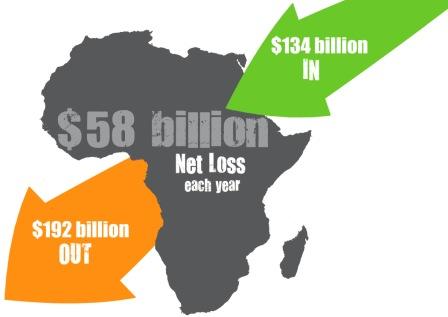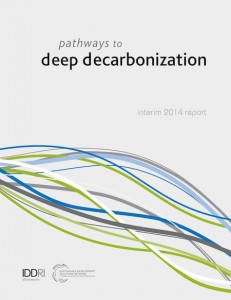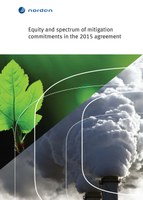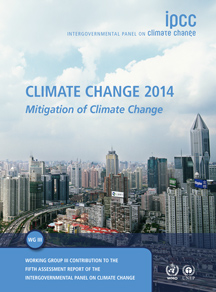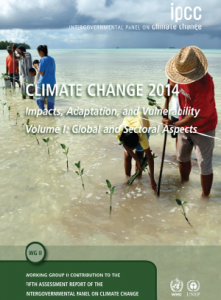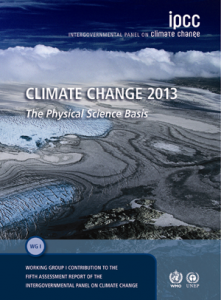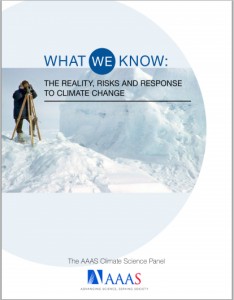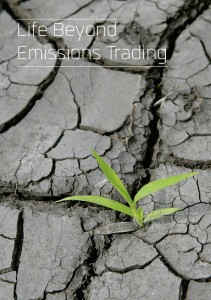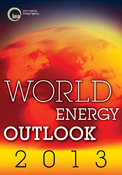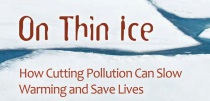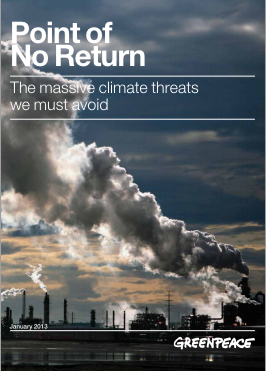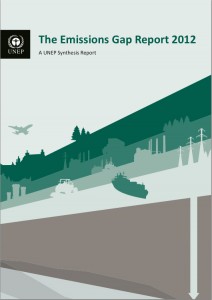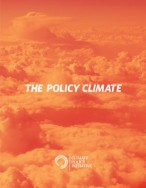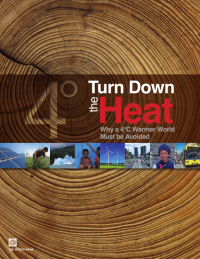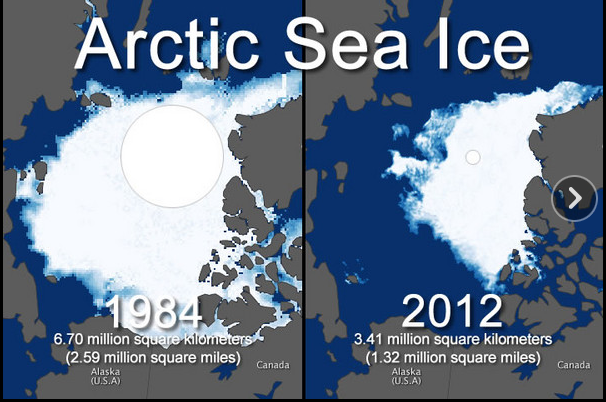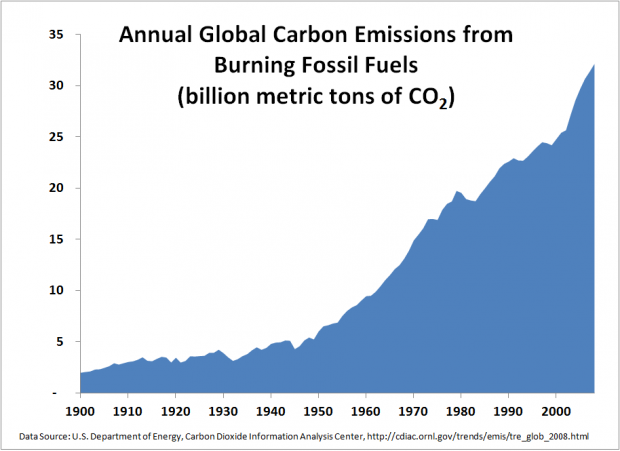Richard Widick: Research Archive
Director, International Institute of Climate Action & Theory
Visiting Scholar, Orfalea Center for Global & International Studies
Writer, Director, Producer, Metroglobe Productions
Richard Widick (IICAT:5/3/2022)
My current study of the international climate wars, titled Climate of Empire, builds on my previous research, both completed and published projects and works that are also in progress.
After this brief introduction to my integrated research, teaching, publication, ethnographic film production, and institution-building program, this page presents my current and previous research, working papers, and publications in reverse chronological order.
From my first published article (“Flesh and the Free Market,” Theory and Society, 2003) I have been developing an empirically based theory of social subjectivity grounded in what I call Critical Cultural Theory–building on the bedrock of modern philosophy (Descartes, Kant, Fichte, Schelling, Hegel), classical social theory (Marx, Freud, Durkheim, Weber), the Frankfurt School (Horkheimer, Adorno, Benjamin, Marcuse, Lowenthal, Habermas), and especially the great structuralist and poststructuralist advances of continental philosophy in the mid to late 20th century (Derrida, Lyotard, Lacan, Bourdieu, Giddens).
On that foundation, I built the research program for studying the colonization of California by the rights-driven culture system of modern capitalism, which I went on to describe as a particular instanciation of the modern social imaginary in my 2009 University of Minnesota book Trouble in the Forest: California’s Redwood Timber Wars.
Further conceptual and methodological foundations for Climate of Empire include my subsequent essays calling for new research of the same nature on a global scale, and my ten years of teaching social theory, cultural theory, methods of global ethnography, methods of cultural analysis, US social movements, and media studies in the Department of Sociology at the University of California, Santa Barbara (UCSB). Most recently I taught Critical Theory — Revolutions: Marx, Freud, and Nietzsche (2015), Representations of the Holocaust (2016), and Dreaming the Revolution: Marx, Freud and Nietzsche (2020) in the Department of German, Slavic, and Semitic Languages at UCSB (these classes were cross listed in the Humanities for the department of Comparative Literature).
Finally, my collaborative research with Professor John Foran, which began with the publication of our agenda by the National Science Foundation under the title “Earth in Crisis,” has been the biggest practical contribution to the work.
Climate of Empire, my current project, is the ongoing culmination of this integrated program of field research, teaching, publication and ethnographic research filmmaking, all of which you can access directly by scrolling down and following the links.
Listen to a brief audio statement of the central theses of Climate of Empire, presented at “HORIZONS,” the Global Studies Conference at the University of California, Santa Barbara, February 24, 2013.
The book is a critical, theoretical, global ethnography of the human rights revolution, as it is embodied in what I call the international climate wars, in which I see converging peoples, labor and environmental movements (all of the social forces of emergent global civil society) increasingly focused on global warming and climate change.
The research question at hand: How and to what effect are new media transforming reflexive modernization by enabling the channeling of attention and information back to the centers of global accumulation from the people and places where the externalized social and environmental costs of world system expansion accumulate and generate grievances?
In 2016, that attention was increasingly focused on the unfolding climate crisis, which itself increasingly becomes the figure through which critical cultural imaginations confront the difficult dynamics of the 21st century.
2016 was also a pivotal year in the United Nations climate talks, at which that year in November the nations began implementation of the 2015 Paris Agreement on Climate Change.
In the course of this research I have participated in the 1999 World Trade Organization protests in Seattle 1999 and in the World Social Forums convened in Porto Alegre, Brazil, 2005, and Caracas, Venezuela, 2006; I have traveled to Vietnam and China to visit handbag, footwear, and apparel factories; and I have represented the University of California at the United Nations Framework Convention on Climate Change (UNFCCC) Conferences of the Parties (COPs) at Durban in 2011, Doha 2012, Warsaw 2013, Lima 2014, Paris 2015, Marrakesh 2016, Bonn 2017, Katowice 2018, and Madrid 2019.
Field research has been conducted as follows:
The Battle in Seattle, World Trade Organization 5th Ministerial Conference, Seattle, Washington, 1999
World Social Forum 5, Porto Alegre, Brazil, 2005
World Social Forum 6, Caracas, Venezuela, 2006
Footwear, glove, and luggage factories of Ho Chi Min City (Saigon), Vietnam, 2009
Footwear factories, Guangdong Province, China, 2009
United Nations Framework Convention on Climate Change, Conference of the Parties 17, Durban, South Africa, Nov-Dec, 2011
United Nations Framework Convention on Climate Change, Conference of the Parties 18, Doha, Qatar, Nov-Dec, 2012
United Nations Framework Convention on Climate Change, Conference of the Parties 19, Warsaw, Poland, November, 2013
United Nations General Secretary’s Climate Summit, Peoples Climate Convergence, and People’s Climate March, September 19 – 23, 2014
United Nations Framework Convention on Climate Change, Conference of the Parties 20, Lima, Peru, Nov/December, 2014
United Nations Framework Convention on Climate Change, Conference of the Parties 21, Paris, France, 2015 – One month of field research and ethnographic film analysis in Nov/Dec, 2015
United Nations Framework Convention on Climate Change, Conference of the Parties 22, Marrakesh, Morocco, 2016 – One month of field research and ethnographic film analysis in Nov/Dec, 2016
United Nations Framework Convention on Climate Change, Conference of the Parties 23, Bonn, Germany – three weeks of field research and ethnographic film analysis in Nov/Dec, 2017
Global Climate Action Summit, San Francisco, California – one week of field research and ethnographic film analysis, September 2018
United Nations Framework Convention on Climate Change, Conference of the Parties 24, Katowice, Poland 2018 – three weeks of field research and ethnographic film analysis in Nov/Dec, 2018
United Nations Framework Convention on Climate Change, Conference of the Parties 25, Madrid, Spain 2019 – three weeks of field research and ethnographic film analysis in Nov/Dec, 2019
The following Working Papers, Published Articles, Book, and Films
WORKING PAPER: “Ethnographic Agitations on the Horizon of Global Environmental Climate Governance” (IICAT 2015).
WORKING PAPER: “Invitation to Paris: On Answering the Call of the Law of the Nations to Participate in Global Climate Governance” (IICAT: 2015/2019 working draft)
WORKING PAPER: “Climate Deadline — Paris 2015: Participatory Film Research Inside the Struggle over the UN’s Next Universal Climate Treaty.”
ARTICLE: “Dangerous Places: Social Media at the Convergence of Peoples, Labor, and Environmental Movements,“ (Cyberactivism and the Participatory Web, ed. Martha McCaughey, Routledge, 2014). As originally published on iicat.org.
WORKING PAPER: “The International Climate Wars: Ethnography and the Global Spectacle of UN Climate Negotiations.” View the poster for this special Orfalea Center event at which the paper was first presented (IICAT 2013).
ARTICLE: (with John Foran): “Whose Utopia? Our Utopia!: Competing Images of the Future at the UNFCCC’s COP17” a special edition of Nature & Culture, 2016). This essay was first presented at Symposium: Beyond Utopia: Crisis, Values, and the Socialities of Nature,
ARTICLE: Originally published as “Climate Justice on the Road from Durban: A Report from the front lines at the 2011 UN COP17 Climate Conference” (IICAT 2013); (revised, expanded, and published as “Breaking Barriers to Climate Justice” in Contexts, Vol. 12, No. 2, the public Sociology Journal of the American Sociological Association)
WHITE PAPER: “Earth in Crisis?: A Forward-Looking Agenda for Research on the Cultural Causes and Consequences of Climate Change 2010-2020 and Beyond,” National Science Foundation 2010, co-authored with John Foran. In this response to the National Science Foundation’s call for white papers on the future of funding for social, economic, and behavioral science, John Foran and I launched our collaboration on climate change social movements and the emergent arena of global climate self-governance.
ARTICLE: What Is Driving Our Modern Social Imaginaries? Turning to Cultural and Environmental Sociology for Answers (IICAT) — this essay first published in 2009, Perspectives, Vol. 31, Issue 2 (Journal of the Theory Section of the American Sociological Association). I republish it here with several new ideas added and corrections of some glaring typographical in the original.
BOOK: Trouble in the Forest: California’s Redwood Timber Wars, (University of Minnesota Press, 2009), cover blurbs:
Trouble in the Forest is a first class work of considerable importance. There is no equivalent book to this one in the study of the conflict over the California redwoods, even though it is on of the emblematic struggles of modern environmentalism. — John Bellamy Foster, University of Oregon
What Mike Davis has so memorably done for Los Angeles County in City of Quartz, Richard Widick has now done for Humboldt County in this provocative narrative. Through the prisms and perspectives of history, social theory, contemporary conflict, and analysis from a global/local point of view, Widick evokes a clash of civilizations pitting unregulated capitalism against an increasingly militant reformist concern for the survival of the planet. — Kevin Starr, California State Librarian Emeritus, Professor at University of Southern California
Reviews of Trouble in the Forest:
Trouble in the Forest reviewed in Environmental History by Aaron Shapiro, Auburn University, August 23, 2012
Trouble in the Forest reviewed by Roger Hayter, Journal of Historical Geography, August 2010.
“Redwoods Real and Imaginary,” Trouble in the Forest reviewed by Diana Stralberg, Landscape Ecology, April, 2010.
Kindra Aschenbrenner reviews Trouble in the Forest in the Humboldt Journal of Social Relations 36, 2014.
Trouble in the Forest reviewed by Eben Lehman and James G. Lewis, Forest History Society Review, Spring/Fall 2010.
“Flesh and the Free Market: On Taking Bourdieu to the Options Exchange,” (first published in Theory and Society 32: 679-723, 2003; republished in After Bourdieu, 2004)
In this urban ethnography of the option traders at San Francisco’s Pacific Stock Exchange, I investigate the gendered logic of cultural practice in the urban community and organizational life-world of San Francisco’s stock option traders. After some success using Pierre Bourdieu’s cognitive theory of practice to make sense of the beliefs, ideals, and values that I found circulating in the place of the options exchange, I showed how psychoanalytic social theory was needed to provide a fuller explanation of the cultural reproduction of masculine domination that I encountered in this exclusive professional world. Any description or theory of everyday modern life, I conclude, rests at least as much on its implicit conception of human agency as it does on its explicit conception of objective social structure, making a nuanced approach to subjectivity a necessity. The embodied, Freudian unconscious is active in and through all of the institutional intersections of race, class, gender, and technology that we inhabit as social subjects—in other words, it inhabits all of the positions that consequently speak through us. My research on the international climate wars proceeds accordingly by developing sociological uses for the most important insights of psychoanalysis.
STATEMENT of RESEARCH DESIGN for Climate of Empire:
Studying the international climate wars and their principal effect – the Climate of Empire.
What is at stake? The creation of a legal regime of global climate governance that limits the production of greenhouse gases and hence the magnitude of future global warming—in other words, the climate itself is at stake, and thus everything else as well.
The international climate wars is my term for this ongoing public conflict over climate governance.
I use it to refer to the combined activities of the social actors in each of three relatively autonomous institutional domains of modern everyday life: the economic, public, and political spheres—insofar as those activities relate to climate governance and climate-related social movements, and especially as they relate to climate law.
Each sphere can be characterized according to specifically productive social activities that express themselves in the social world as objective forces: the economic sphere is the realm of market forces (capital; industrial associations; corporations; labor unions; and workers as individuals); the public sphere is the realm of communicative civil forces (media; peoples, labor, & environmental social movements; universities; NGOs; religious organizations; citizens and civil society in general); and the political sphere is the realm of legal forces – the forces of Law (international governing institutions; states and their legislatures; courts; and individuals as voters).
The first principle of my analysis of the international climate wars can be stated simply: the planet’s climate, its world industry, its social movements, and even its nation-states and their global cities are not constituted prior to the social and environmental relationships and struggles in which they are embedded, but rather through them. Read more about my research design, theory and methods >>>
According to the International Panel on Climate Change’s (IPCC) Nov. 1, 2014 5th “Synthesis Report,” climate science is indicating a rapid acceleration of warming and the approach of tipping points into irreversible climate change.
I believe that the struggle over how to use international cooperation in general—and the UNFCCC treaty process in particular—as well as the existing structure of international institutions, to slow global warming by regulating greenhouse gas production (Kyoto Protocol; Durban Platform) and to facilitate adaptation to climate change (Green Climate Fund [GCF – governing instrument], UN Adaptation Fund, Climate Technology Center & Network, etc.) already constitutes the defining social conflict of the dawning century, perhaps of all time.
EVERYDAY LIFE IN A CHANGING WORLD
As I see it, modern industrial production and atmospheric concentration of carbon dioxide and other greenhouse gasses is changing the climate—and that changes everything else.
It changes for example the conditions of planetary ecological well-being and thus human labor, public life and democracy—and so by extension our work as social historians, theorists, and activists.
It means we must put our ideas into action and do our part in shaping the new world that these changes are making.
It changes the logic of our inhabitation of earth with the introduction of a new axiom: sustainability.
The digital revolution. Modernization. Development. Communication. Production. Urbanization. Publicity. Governance. Movements. Education. Theory. Everything must be re-conceived and rebuilt according to this new first principle.
With that in mind, Climate of Empire takes the international climate wars to be emblematic of the more general question of modern everyday life and its compatibility with the earthly ecosystems upon which it is by nature dependent.
GLOBAL STUDIES
These changes must be seen through the interdisciplinary lens of Global Studies and its constitutive concept of globalization—which I define, in general, as the current, ongoing integration of the world’s peoples, cultures, and economic systems.
The current dominant tendency within post-cold war globalization to be the universal expansion and neoliberal transformation of the capitalist world economic (culture) system—the system of rights-based juridical economic, public, and state institutions that have been at the dynamic core of liberal western Euro-Anglo-American economic industrialization and governance for at least three centuries.
In the current historical moment of global economic crisis, in which return to growth appears to be the only economic strategy being offered by national and global decision makers, we see how global warming and triumphant neoliberal globalization have grown to be indelibly linked. This means that the politics of free market fundamentalism and the international trade and development policies of the 21st century (WTO, IMF, WB, UNDP, etc.) will be central to understanding climate change and the social struggle for an effective, science-based legal regime of global climate governance.
THE CLIMATE JUSTICE MOVEMENT
A crucial component of globalization is the transnationalization of social movements, including the Climate Justice Movement.
In this regard, I am tracking the convergence of peoples, labor and environmental movements in the Climate Justice Movement (of movements)—and that means studying the various institutions of emergent global environmental self-governance with which they are in constant struggle: namely the United Nations Framework Convention on Climate Change (UNFCCC), but also numerous other UN organizations likewise promoting international economic, social, cultural and environmental cooperation. >>> read more on the movement(s)
CONVERGING SOCIAL MOVEMENTS IN THE INTERNATIONAL PUBLIC SPHERE
If the 1999 Battle in Seattle (between converging social movements and the World Trade Organization) signaled the arrival of a game-changing era of anti-globalization movements, the 2009 global convergence of movements at the United Nations Conference of Parties 15 in Copenhagen signaled the rise of climate change and thus climate governance to the apex of concern within these very same movements. In our view, this in another indication that climate change is now and will increasingly become the central figure in and through which both the human and natural sciences as well as the critical cultural imagination discover, explore and speculate about the ultimate social and ecological effects of fossil-fueled industrial modernity.
Please visit our page on Converging Peoples, Labor, and Environmental Movements, where under the banner of “peoples movements” we include indigenous peoples and peasant peoples and poor peoples and colonized peoples of every kind—what unites them is their common recognition that their hardships follow from the excesses of neoliberal economic globalization.
RESEARCH QUESTIONS & METHODS
Because good research is driven by good questions, we endeavor to continually refine our focus and revise the questions guiding our research, keeping abreast of the changing science of global warming as well as the broadening sphere of emergent global climate self-governance, by which for example United Nations climate initiatives extend themselves toward every sphere of economic, social and cultural activity.
How are the social movements and the UN agencies charged with managing climate change mitigation and adaptation responding to the increasing certainty of climate science? to the pressure of economic interests? to the demands of civil society? and to the social unrest associated with growing climate chaos (extreme weather—for example, rising sea levels, droughts and floods; heat waves and cold spells; collapsing food chains; melting ice and disappearing rivers, etc.)?
UN CLIMATE NEGOTIATIONS AS GLOBAL SPECTACLE
Reading my working papers (see sidebar menu), you will find that my principal efforts thus far are focused on the UNFCCC and its annual Conference of Parties—a ritual gathering that I see as crucial because it functions to convoke the corporations, the movements and the states in a planetary Spectacle of conflict that dramatizes the basic social and ecological contradictions built in to the globalizing world economic (culture) system.
The spectacle of big UN international climate conferences thus serves the pedagogical function of educating us, the public and everyone involved, in the complexities of carbon-industrial modernity and its accumulating effects on the Earth’s basic life support systems—its air, water, forest, and ocean systems and its diverse multitude of living organisms.
The spectacular conferences, serving as meeting grounds for converging peoples, labor and environmental movements, serve as arenas for these movements to educate themselves about each other, to identify their concerns, and so to focus their combined attentions.
In this way, the yearly drama of UN Climate COPs become more than just the target of global civil society—they grow increasingly constitutive of that global civil society.
They are engines of global civic engagement, and their relevance must be appraised as such and not merely on the grounds of their own internal progress towards their own internal objectives.
The more I watch the world’s economic, civil society and state actors grappling over climate governance under the auspices of the United Nations climate negotiations, the more I believe that our collective future hangs in the balance of this model cosmopolitan experiment in international cooperation.
SOME BACKGROUND AND SOURCES ON CARBON TRADING AND THE NEOLIBERAL CAPTURE OF THE PARIS PROCESS
Briefly, by 2019 IICAT has collectively learned a great deal about the social forces backing carbon trading schemes, ostensibly for mitigation in particular, as well as for climate action in general.
These sources will be invaluable in preparation for reading through the following research documentation and reports from my ten years of conflict-seeking participatory research ethnography and filmmaking inside the UN climate talks:
Why Carbon Markets are Bad: Release of International Report on Carbon Pricing
COP 23 PRESS CONFERENCE
November 15, 2017
presented by the Indigenous Environmental Network (IEN)
Read this report for what we see as the most authoritative and critically informed analysis of REDD+, carbon markets, and their effects on human rights and environmental and climate justice under the 2015 Paris Agreement.
Larry Lohman, Carbon Trading: a critical conversation on climate change, privatization and power, Development Dialog 48, September 2006.
What is International Climate Policy About? (Lohman 2006:33).
:THE UNITED NATIONS CLIMATE TALKS:
From Durban (2011) to Paris (2015) — building out the first universal climate treaty
The method proceeds by studying and participating in the United Nations production of the next universal climate treaty using participatory action research methods.
This means Igo to the talks, bear witness, get involved, host events and press conferences designed to increase participation, especially by underrepresented constituencies, and in general add our mental and physical energies to the groundswell of interest and labor that is increasingly pouring into the struggle for a scientifically sound and globally just collective response to global warming and climate change.
What follows, in reverse chronological order, is a compendium of my activities and analyses of the yearly talks, which are conducted by the United Nations Framework Convention on Climate Change (UNFCCC) under the working term Conference of the Parties (COPs).
Working backward from Lima (2014) through Warsaw (2013), Doha (212), and Durban (2011), I provide a few important links and perhaps a few guiding ideas, so the reader can get a sense of the scope on which the talks take place.
Keep scrolling down to find links to additional information and reports and various other sources that I find integral to my own understanding and participation in these events.
UNFCCC COP 20, LIMA, PERU — Dec. 1 – Dec. 14, 2014
From Lima to Paris ….
Stay tuned for the next draft of the Paris climate accord, to be assembled now, after the Bonn talks (June 1 – 11) [at which the 90 page Geneva text delivered in February was shaved by merely 5 pages] for delivery in August before the next round of pre-Paris negotiations.
Read this summary of the Bonn climate talks published by IISD (International Institute of Sustainable Development): at the Bonn just concluded concluded on June he Co-chairs of the treaty process (the Durban Platform for Enhanced Action) proposed to assemble the next draft.
The UNFCCC Decision: The Lima Call to Action (advance unedited version, with DRAFT TEXT of the next universal climate treaty included in an Annex: Elements for a Draft Negotiating Text).
IISD’s Dec. 16 SUMMARY of COP 20, Lima, Peru, plus full coverage at iisd.org.
Some exacting and relevant criticism: Pablo Solon, Notes for Understanding the Lima Outcome; Oscar Reyes, The Latest Climate Talks … ; from the Women and Gender constituency, Women at COP 20 Blast Failure … ;
OUTREACH, a multi-stakeholder magazine, published this COP 20 Wrap -Up as well as Daily Reports.
In the run-up to Lima, the Democracy Center in Cochabamba Bolivia published Movement Strategies for Moving Mountains (2014).
Third World Network’s December 2014 issue of Resurgence is an excellent source for analysis of events at Lima COP 20.
Keep scrolling down this front page to continue reading about IICAT participation in the UN climate talks 2011 to the present, or … Read more about the path from Lima to Paris here >>>> Tracking the Next Universal Climate Treaty.
UN CLIMATE SUMMIT, New York, New York, September 2014
At the the General Secretary’s special United Nations Summit on Climate Change….
Guardian UK “As it happened” live feed archived here—with many highlights from inside the summit.
At COP 20 in Lima (December 1 -10, 2014), the so-called South American COP, we will be taking a special interest in controversy surrounding forests and forest peoples.
For reference, see the UN’s New York Declaration on Forests (released at the UN Climate Summit in SEptember 2014); and compare with ompare the UN declaration, above, with the Palangka Raya Declaration of the Forest Peoples Program
UNFCCC COP 19, WARSAW, POLAND, 2013
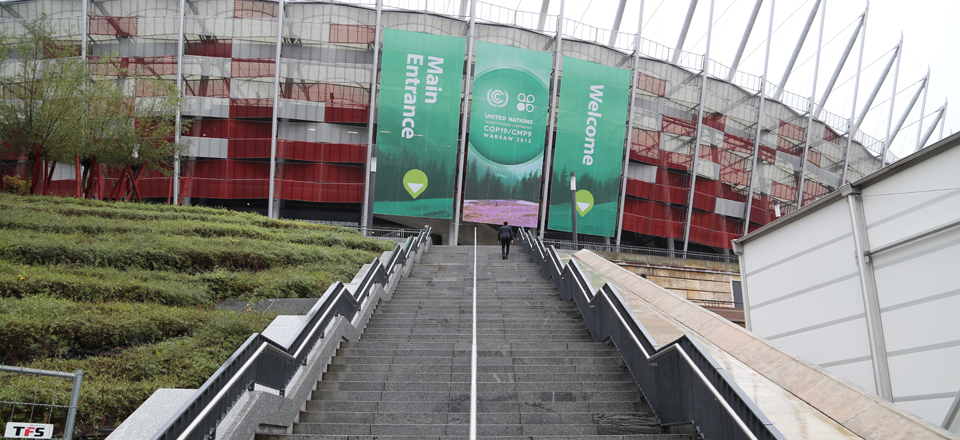
- Warsaw National Stadium: Location of COP19, Nov. 11 – 23, 2013
At COP 19 in Warsaw (November 11 – 23) we saw the momentum shift toward the 2015 Paris Climate Accord (or whatever they end up calling the new treaty mandated by the 2011 Durban Platform for Enhanced Action, which launched the initiative)—all eyes are now set on COP 20 in Lima 2014, the last working COP before the Durban Platform is finalized and adopted in 2015 as the next universal climate treaty.
No longer are the parties mired in obscure, multi-track negotiations in which nations big and small, rich and poor, powerful and weak can hide behind questions about science and equity—on the contrary, now they face clear decisions under open scrutiny in transparent public talks concerning agreed upon science and indisputable procedures: make ambitious emission reduction and finance commitments now, for inclusion in the next universal climate treaty—the Durban Platform, to be adopted at COP 21 in Paris, 2015—or stand before the world court of public opinion as purveyors chaos, death and destruction on today’s least well-prepared peoples and on coming generations all over the planet.
As a window into which way the negotiations are trending, checkout this recent report, which Corporate Europe Observatory (CEO) and the Transnational Institute (TNI) published on the eve of COP 19, in Warsaw: The COP19 Guide to Corporate Lobbying: Climate crooks and the Polish governments partners in crime.
We’re thankful that Corporate Europe Observatory’s report linked us to the Transnational Institute paper by Edgardo Lander on The Green Economy: the wolf in sheep’s clothing.
On the science: Also in October 2013 the IPCC began releasing its 5th assessment, and the verdict is perfectly clear and essentially unanimous that we are nearly past the time when talking about a +2 degrees Celsius future will remain relevant—soon the hopeful target will be +4 degrees, and the tragic outer limit of +6 degrees or more is increasingly more likely. This point is supported by recent reports that CO2 emissions in the first decade of the 21st century increased on average about 2.9% per year (EU Commission report Trends in Global CO2 Emission 2013, p. 8).
The numbers are hard to dispute—just look at these figures for total global of CO2 emissions, in billions of tonnes, compiled by the same EU Commission report (pps. 18 – 19): 1990 (22.7); 1991 (22.6); 1993 (22.8); 1994 (22.9); 1995 (23.6); 1996 (24.2); 1997 (24.4); 1998 (24.6); 1999 (24.8); 2000 (25.4); 2001 (25.4); 2002 (26.1); 2003 (27.2); 2004 (28.5); 2005 (29.3); 2006 (30.3); 2007 (31.4); 2008 (32.0); 2009 (31.6); 2010 (33.0); 2011 (34.0); 2012 (34.5).
In addition to showing that the UNFCCC process has failed to actually reduce emissions over the course of its 20 year history of working to do just that, it also shows that the rate of emissions is increasing at an increasing rate. The rate of increase in the first decade of the 21st century is approximately double that of the 1990s.
What we don’t and can’t know, on the other hand, is where we would stand without the UN process.
But here is something additional that we do know, and which should not be overlooked or underestimated: for twenty years the UNFCCC has been training civil servants, negotiators, countries, corporations, media, and activists to engage the problem.
At IICAT, we see this pedagogical function of the UN climate talks to be extremely important.
With the expertise and the structure it has built over these decades, it now has the capacity and knowledge to produce and enforce a treaty between the nations that could begin to bring CO2 production down.
But is the Durban Platform, which is presently on the home stretch on the road to Paris 2015, actually meeting this challenge?
Opinions vary—but our work inside the last three COPs documenting the process and engaging and interviewing folks from the economic, public, and political spheres indicates scarce reason for optimism.
On the contrary, what we see, with our own eyes and in the studied opinions of our research subjects, is an increasingly worrisome trend toward corporate capture over the process, as every initiative and program more and more starts to offer the world’s biggest carbon polluters new opportunities to profit.
Take for example the increasing financialization of Clean Development Mechanism; REDD+; LULUCEF; the NMM initiative advanced at COP 19 in Warsaw; the Green Climate Fund; and on down the line (in time we plan to provide links to each of these programs, and to the critical studies that show how each one is a site of contestation between both private sector and state fossil fuel companies on one side and civil society groups, activists and academics on the other).
These programs intend to use financial markets and tradable pollution credits to incentivize polluters to cut back. But are they working? The data cited here and our research subjects agree—the answer is no.
At Warsaw, the social movements symbolically walked out in protest. That is one kind of answer.
Another answer would be to start using a stick instead of these financial carrots, but the trend is exactly the opposite at both the domestic and international level, as the nations move forward implementing various Carbon Trading systems and the UNFCCC gets increasingly more involved with the International Emissions Trading Association in trying to integrate the national carbon markets in a global trading system that will, if adopted and universalized by dint of the new treaty, more and more allow rich developed countries to offset their own carbon pollution costs and national emission reduction efforts on to developing countries.
Social movements demanding climate justice see this trend toward market mechanisms as ignoring the facts already stated, and remind us that markets are engineered to produce price efficiencies, not justice, not fairness, not equity.
In fact, because markets have already failed to capture the social costs of carbon pollution and internalize them in the prices of the commodities they produce, a situation leading to climate change for all while creating super-profits for the few, social movements tend to see global warming as the outcome of market failure.
For social movements reaching this conclusion, it is a painful irony to see the same kind of market-driven neoliberal ideology that produced global warming now increasingly offered up as the solution.
I tend to agree, but with this caveat: there are no such things as markets in general, only specific markets created by real historical individuals according to specific laws.
The idea of markets should thus not be the central object of criticism—rather we should focus on specific markets, study them historically, and determine if they are failing to produce a desirable distribution of resources, costs, profits, and justice.
As we see it, the facts are speaking more and more clearly about this all of the time: the fossil fuel market as presently regulated is failing to capture the social and environmental costs of carbon pollution, and is instead externalizing those costs on society at large and global ecology, leading to massive increases in the costs of production in general for the 99% and super-profits for the vested 1%.
ON EQUITY: in Warsaw all nations agreed to erect a so-called third pillar of universal climate governance called Loss & Damage. Henceforth the negotiations will work toward mitigation of emissions, adaptation to guard against future warming already locked-in by emissions to date, and compensation for Loss & Damage presently attributable to anthropogenic climate change.
In this way, the path ahead has been cleared. At the Bonn intercessional meeting in March 2014 the first national submissions to the Durban Platform were gathered. Follow that story on the UNFCCC web site here. Read civil society analysis of the Bonn intercessional here.
The outcomes of Bonn set the stage for action at the UN General Secretary Ban Ki Moon’s states & civil society convergence in New York on September 23, 2014.
Connect with the counter-summit activities here.
There has to be this kind of push back, because we cannot expect the Nations to act together, in the universal interest of human kind and the species and ecologies on which we all depend for cultural and economic sustenance, without massive direct action civil society pressure on the biggest and richest parties, who must lead the other nations and the United Nations itself toward climate justice.
Here is the UNFCCC’s official “Report of the Conference of Parties on its nineteenth session held in Warsaw from 11 – 23 November, 2013 Addendum Part 2 Actions Taken By The Conference of Parties At Its Nineteenth Session.”
UNFCCC COP 18, DOHA, QATAR, 2012
The year before Warsaw COP 19, we went to Qatar for COP 18 in Doha, seeking answers to several questions, including: how is the COP reacting to new data indicating massive increases in the YEARLY RATE OF CO2 EMISSIONS (see chart below)? to the great arctic melt of summer 2012 (see NASA image below)? and to the gathering storm of social movements and grass roots civil society attention to climate action, planning and climate law (see below links to essays and commentary on the changing attitudes toward global warming)? How are the movements coming to understand each other and their mutual relationships to the international climate negotiations? And how is all of this market, social movement and state political attention influencing the UNFCCC’s work on a new climate treaty for 2020 (see the UN Framework Convention on Climate Change Conference of Parties 17 2011 decision launching the new treaty process — the so-called Durban Platform for Enhanced Action)?
At five official press conferences conducted at the Qatar National Convention Center, we asked a variety of scholars and activists, as well as a one-time climate negotiator, to reflect on the same in answer to this question: What must the Durban Platform do, and how should we go about getting it done? These press conferences are archived at the UNFCCC.
Throughout 2013, we presented our analyses and field research data produced at COP18. Our first appearance was on January 18, 2013, where we presented a photo and video seminar assessing COP 18. The event was part of the Carsey-Wolf Center’s year-long Critical Issues In America 2012 – 2013 program “Figuring Sea Level Rise” at the University of California, Santa Barbara. Our title for the open public seminar was “Durban to Doha: Assessing the Latest Round of UN Climate Talks at COP18 in Qatar.”
For background on COP 18 and the UN climate talks preceding those conducted in Doha, we recommend the following histories and analyses up through Durban COP 17 2011 and the interim Bangkok round concluded on Sept. 5, 2012: The International Institute for Sustainable Development’s (iisd) summary report on Durban COP17; Patrick Bond’s “Durban’s Conference of polluters, market failure, and critic failure” (ephemera 2012); Third World Network’s (TWN) reports from the interim Bangkok negotiations, Aug. 30 – Sept. 5, 2012.
UNFCCC COP 17, DURBAN, SOUTH AFRICA, 2011
Our investigation of the UN climate talks began the year before in Durban, where we attended COP 17, concerning which we have published the following: Whose Utopia? Our Utopia! Competing Visions of the Future at the United Nations Climate Talks, COP 17 in Durban, South Africa, 2011 (Foran & Widick, IICAT 2012; revised for Culture & Nature, 2014, forthcoming); Breaking Barriers to Climate Justice (Foran & Widick, Contexts 2013); “Invitation to Durban: Ethnography and the Global Spectacle of UN Climate Negotiations” (Widick, IICAT 2011).
What happened at the Durban talks? The Durban Platform was agreed, charting a course for the next four COPs up through Paris 2015 and adoption of the next universal climate treaty, which will set the international response for the next several decades.
Crucial sources on the Durban outcomes in both the policy arena and public sphere of civil society groups and social movements include:
Patrick Bond’s analysis of civil society and climate justice activism at COP17, Durban, South Africa 2011: DURBAN’S CONFERENCE OF POLLUTERS, MARKET FAILURES, AND CRITIC FAILURE
additional timely sources include (in reverse chronological order):
State of the Climate in 2014: Special Supplement to the Bulletin of the American Meteorological Society , Vol. 96, No. 7, July 7, 2015, report.
Findings reported in the Guardian include: warmest year to date was 2014; freakishly warm Pacific ocean waters (4-5 degrees above average; Alaska 14 degrees above verage temperature; 90% of the heat of CC is absorbed in oceans… etc.
G7 SUMMIT, June 7-8, 2015, Leaders’ Declaration [with special focus on Climate Change and Development, and including the decarbonization promise] download the FULL REPORT
RECOUNT, a new, critical analysis of the so-called “Carbon Budget,” by Australian David Spratt (2015), Climate Code Red. Download the FULL REPORT
United States Department of Defense
2014 Climate Change Adaptation Report, October, 2014
From the Office of the President of the United State, Barack Obama
THE COST OF DELAYING ACTION TO STEM CLIMATE CHANGE (July, 2014)
Read about the new White House report in the Guardian.
The case of Africa — see especially p. 23 of this new report from Africa-focused NGOs
New Report: HONEST ACCOUNTS: The True Story of Africa’s Billion Dollar Losses, by Health Poverty Action, Jubilee Debt Campaign, World Development Movement, African Forum and Network on Debt and Development (AFRODAD), Friends of the Earth Africa, Tax Justice Network, People’s Health Movement Kenya, Zimbabwe and UK, War on Want, Community Working Group on Health Zimbabwe, Medact, Healthworkers4All Coalition, groundWork, Friends of the Earth South Africa, JA!Justica Ambiental/Friends of the Earth Mozambique.
Read about the report in the UK Guardian — “Aid to Africa: donations from west mask ‘$60bn looting’ of continent,” by Mark Anderson, Guardian, Tuesday, july 15, 2014.
NEW REPORT, Pathways to Deep Decarbonization, commissioned by the UN Secretary General, compiled by the Deep Decarbonization Pathway Project, “a collaborative initiative to understand and show how individual countries can transition to a low-carbon economy and how the world can meet the internationally agreed target of limiting the increase in global mean surface temperature to less than 2 degrees Celsius (°C).”
The Deep Decarbonization Pathway Project is “a knowledge network comprising 15 Country Research Teams and several Partner Organizations who develop and share methods, assumptions, and findings related to deep decarbonization.
Each DDPP Country Research Team develops illustrative pathway analysis for the transition to a low-carbon economy, with the intent of taking into account national socio-economic conditions, development aspirations, infrastructure stocks, resource endowments, and other relevant factors.
The interim 2014 report focuses on technically feasible pathways to deep decarbonization” (from the Executive Summary).
In the Guardian: “UN Issued Roadmap on How to Avoid Climate Catastrophe,” by Suzanne Goldberg, July 8, 2014
EQUITY & Spectrum of Mitigation Commitments in the 2015 Agreement
Report of NORDEN, the Nordic Council, but see also this positive assessment & critique of the report by EcoEquity
THE IPCC 5th ASSESSMENT
Read all of the reports here.
IPCC Climate Change 2014 Synthesis Report. download the FULL REPORT
US National Climate Assessment, Draft for Public Comment, 2013
Read about the project here.
Visit the official release site at globalchange.gov.
WHAT WE KNOW …. A new 2014 report from the American Society for the Advancement of Science. Read about it in the news here.
QUOTE: “We’re the largest general scientific society in the world, and therefore we believe we have an obligation to inform the public and policymakers about what science is showing about any issue in modern life, and climate is a particularly pressing one,” said Dr. Alan Leshner, CEO of AAAS. “As the voice of the scientific community, we need to share what we know and bring policymakers to the table to discuss how to deal with the issue.”
LIFE BEYOND EMISSIONS TRADING, a new 2014 report by Corporate Europe Observatory.
Quote: “What would fill the void if the EU Emissions Trading System (EU ETS) were allowed to collapse? This briefing shows that ending the ETS would not leave a climate policy void. Emissions trading has awarded huge subsidies to some of the EU’s most polluting industries while at the same time failing to reduce greenhouse gas emissions and undermining other environmental measures. As the EU debates a 2030 climate and energy package, it should seek ambitious targets for greenhouse gases, renewable energy and energy efficiency – but targets are not enough. The EU should take a greater role in directly regulating greenhouse gas emissions at source. The existing policy framework could be made more robust by extending the Industrial Emissions Directive to regulate greenhouse gases, strengthening the Energy Efficiency Directive, and reforming the Effort Sharing Decision to exclude the use of carbon offsets. There should also be debate on what role the EU can play. Returning to a patchwork of national legislation would weaken the EU’s ability to address climate change, with some countries’ inaction putting pressure on others to weaken their own policies. At the same time, citizens’ movements at local and national levels are key in achieving broader transformations. Germany’s Energiewende [energy transition], despite some serious implementation problems, shows the positive role that popular pressure can play in reducing greenhouse gas emissions. Recent efforts to remunicipalise energy supplies also serve as a reminder that public ownership of infrastructure is a key condition for creating the scale of shift required to address climate change.”
World Energy Outlook 2013, a report of the International Energy Agency
ON THIN ICE: How cutting pollution can slow warming and save lives (executive summary) a 2013 Joint Report of The World Bank The International Cryosphere Climate Initiative, quote:
“The science is settled and the problem identified. Now we must act in the smartest and most effective way we can. Our world is on thin ice.”
Download the full report here.
World Resources Institute – “Reflections on COP 18 in DOHA”
2013 GreenPeace report: Point of No Return
Global Risks 2013, a new report from the World Economic Forum quote:
“Recent scenario projections based on existing government policies and declared policy intentions predict that a long-term increase of more than 3.5 degrees Celsius is probable. The more pessimistic scenario assuming no change in government policies and measures beyond those adopted or enacted by mid-2011 talks of a conceivable increase of 6 degrees Celsius or more” (p. 18).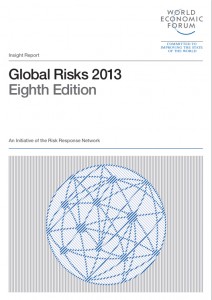
The EMISSIONS GAP REPORT of the UNITED NATIONS ENVIRONMENT PROGRAM, 2012
Read this 2012 report from the Climate Policy Initiative titled The Policy Climate, which details recent developments in US climate-related policy. The Climate Policy Institute is funded by an Open Society Foundations grant to support sustainable development and policy.
Read about how things are going according to the United States Environmental Protection Agency’s 2012 Climate Change Indicators report:
Please read the US EPA’s newly released report Climate Change Indicators in the United States, 2012, written to increase the US public’s understanding of how global warming and climate change are already impacting US ecology and social life, as well as what to expect over the coming century, during which the EPA expects to register between an average temperature increase of between 4 and 10 degrees Fahrenheit (which IICAT sees as a very conservative estimate, given that the World Bank sees a future defined by global average temperature increases of between 4 and 10 degrees Celsius this century, and perhaps as early as 2050).
Read about the coming + 4° Celsius planet….
Download this November 2012 report for the World Bank, written by Potsdam Institute for Climate Impact Research and Climate Analytics:
“4° Turn Down the Heat: Why a 4°C Warmer World Must be Avoided”
QUOTE: “Scientists agree that countries’ current United Nations Framework Convention on Climate Change emission pledges and commitments would most likely result in 3.5 to 4°C warming. And the longer those pledges remain unmet, the more likely a 4°C world becomes” (ix).
QUOTE: “The 4°C scenarios are devastating: the inundation of coastal cities; increasing risks for food production potentially leading to higher malnutrition rates; many dry regions becoming dryer, wet regions wetter; unprecedented heat waves in many regions, especially in the tropics; substantially exacerbated water scarcity in many regions; increased frequency of high-intensity tropical cyclones; and irreversible loss of biodiversity, including coral reef systems” (ix).
THE GREAT MELT OF 2012:
Consider this image comparing the Arctic Sea Ice Minimum of 1984 and 2012 …
NASA image – click to visit NASA and read the explanation
_________________________________________
NEW DATA ON GLOBAL CARBON EMISSIONS
48% more carbon is now being emitted yearly than was being emitted in 1992, the year in which the first UN Earth Summit inaugurated the UNFCCC international climate negotiation process: 31.8 gigatonnes was emitted in 2010 (the latest available figures)—that is a 6.7% increase over 2009 emissions and 48% more than the 1992 figure.
Read it in the Guardian: http://www.guardian.co.uk/environment/2012/jun/21/global-carbon-emissions-record.
See the comparable 2012 analysis of recent emissions data by the United Nations Secretary General’s High-Level Panel on Global Sustainability, whichputs the increase in yearly CO2 emissions between 1992 and 2009 at 38%. Read the report here (cite page 19 for the figure of 38%): Resilient People Resilient Planet: A Future Worth Choosing.
For additional breaking climate change science and news, visit Climate Code Red, at which site the following US Dept. of Energy graph was published on July 9, 2012:
_________________________________________
Please read Andrew J. Hoffman’s “Climate Science as Culture War” (Stanford Social Innovation Review, Fall, 2012), for a thoughtful analysis of today’s changing attitudes toward global warming, climate change and climate science.
_________________________________________
Please read renowned climate scientist James Hansen’s (et. al) recent 2012 analysis of public perception of climate change in the context of extreme weather events in the United States: “The New Climate Dice: Public Perception of Climate Change”
_________________________________________
Click here to read how UC Berkeley Physicist Richard P. Muller describes his newfound convictions on the science of global warming: http://www.nytimes.com/2012/07/30/opinion/the-conversion-of-a-climate-change-skeptic.html?ref=opinion&pagewanted=all
_________________________________________
LAST HOURS… a short film by Leila Conners
Visit the website lasthours.org
“”Last Hours” is presented and narrated by Thom Hartmann and directed by Leila Conners. Executive Producers are George DiCaprio and Earl Katz. Last Hours is produced by Mathew Schmid of Tree Media Foundation, and was written by Thom Hartmann, Sam Sacks, and Leila Conners. Music is composed and performed by Francesco Lupica.”

